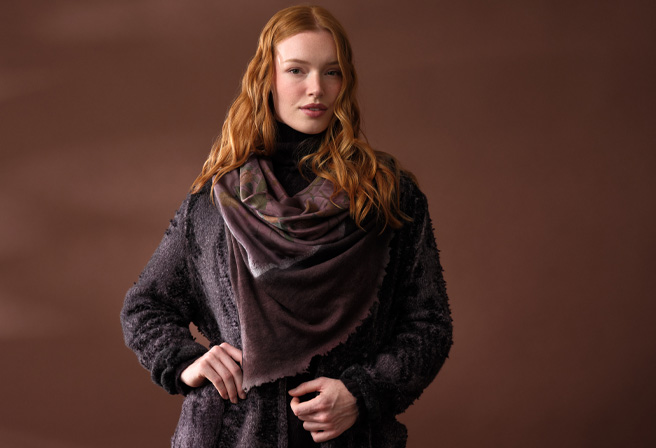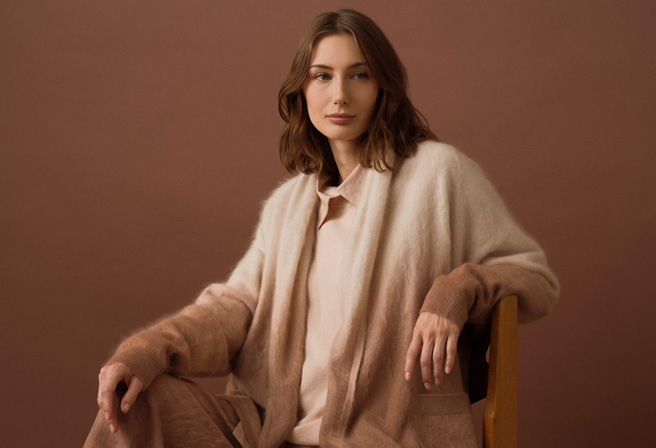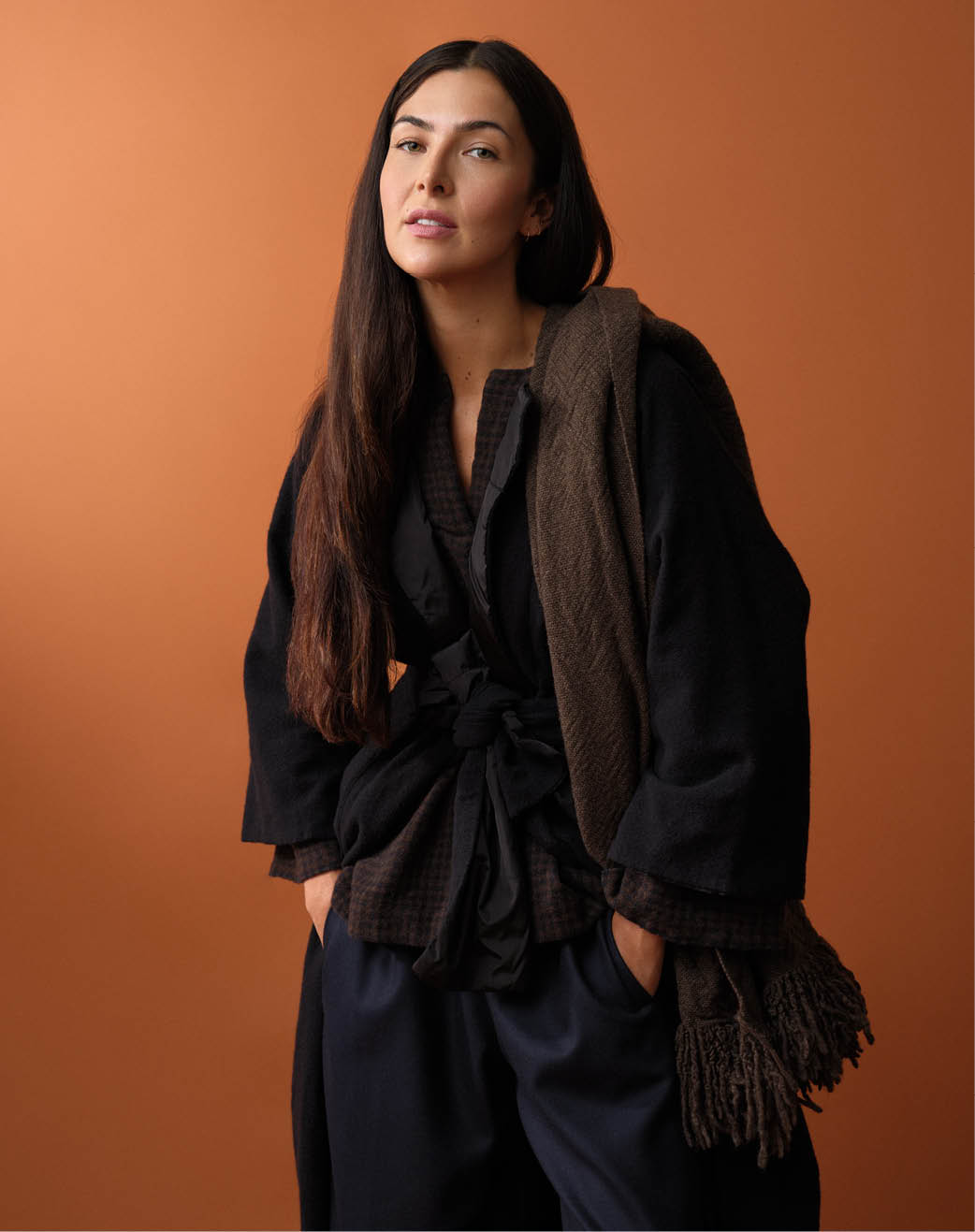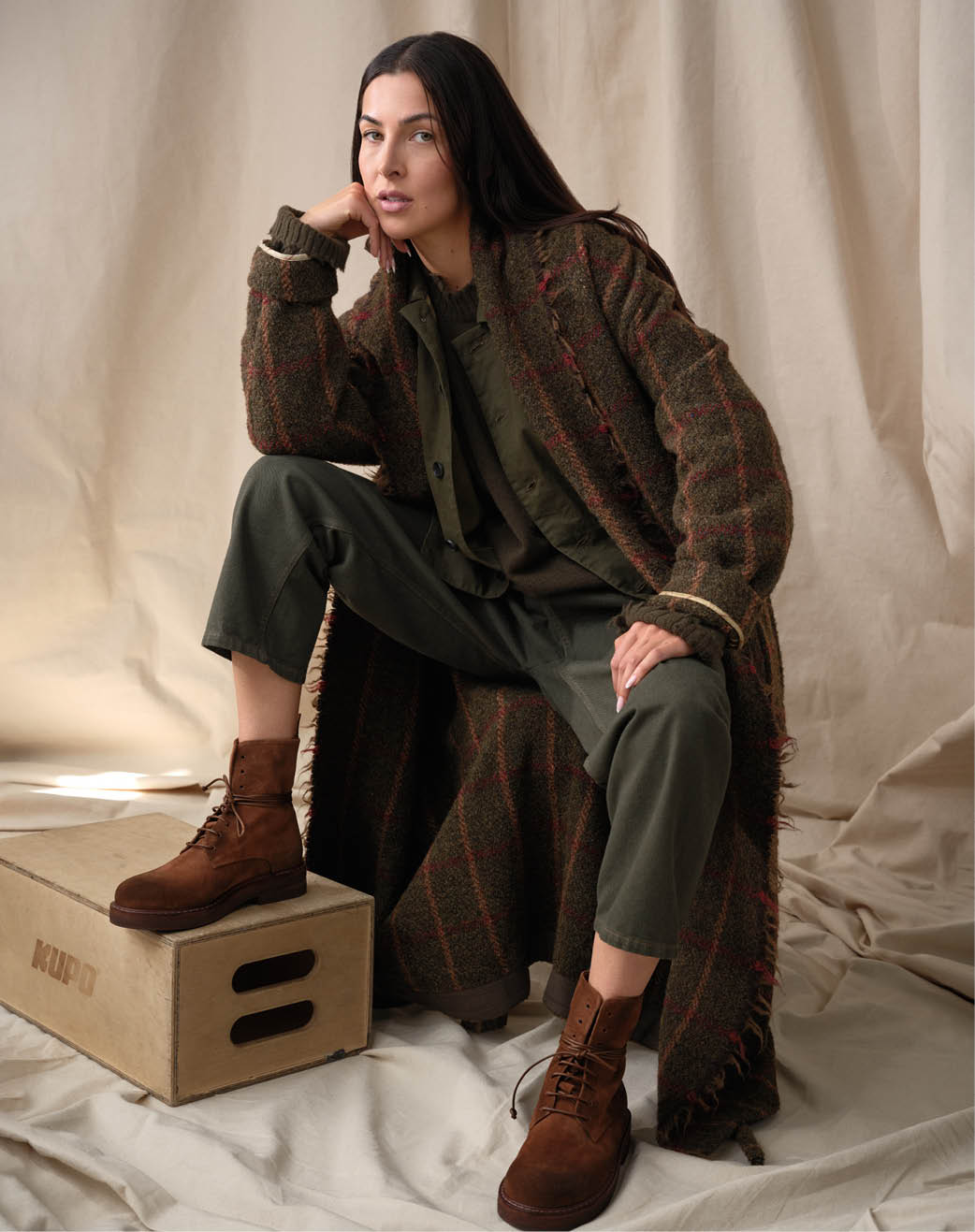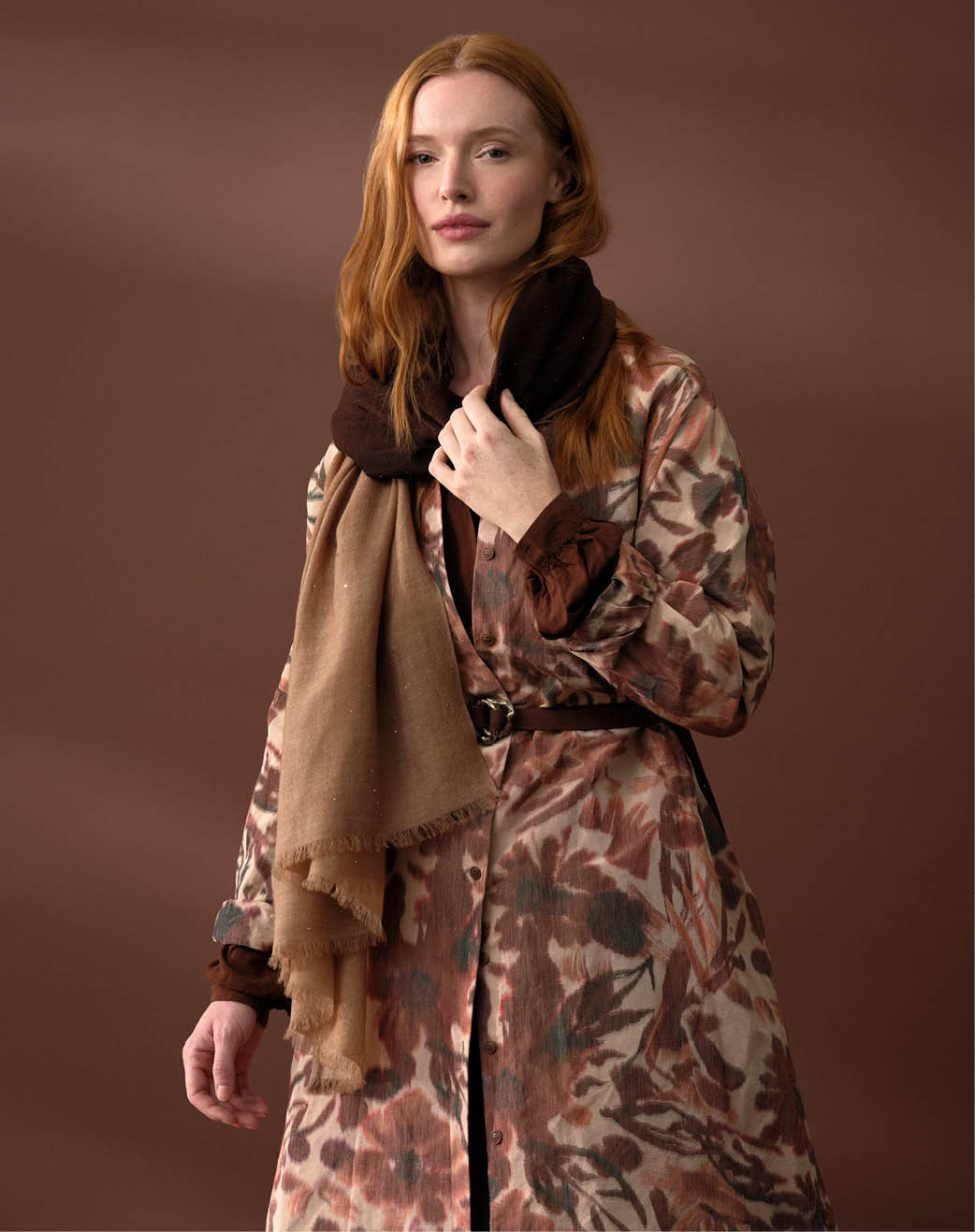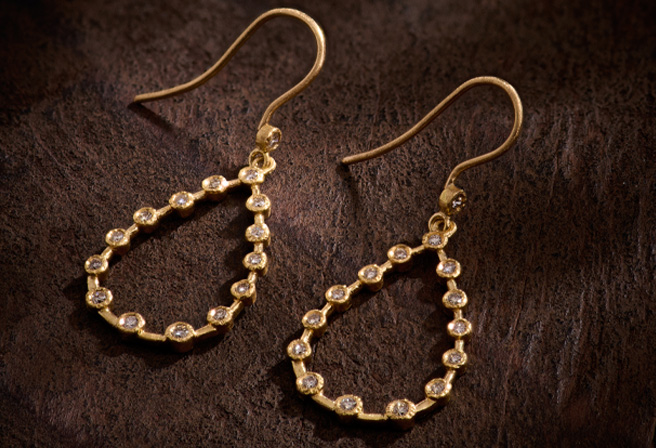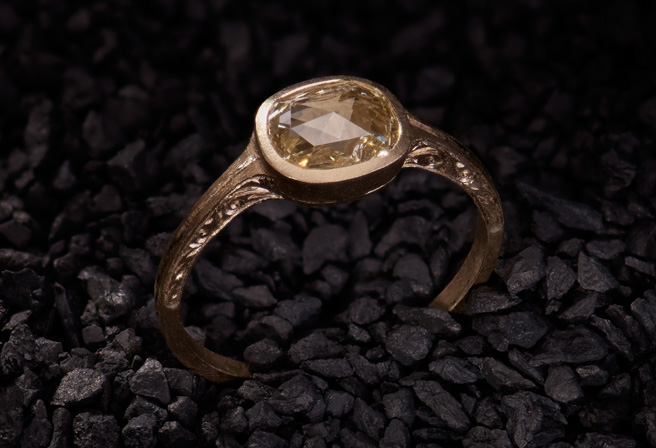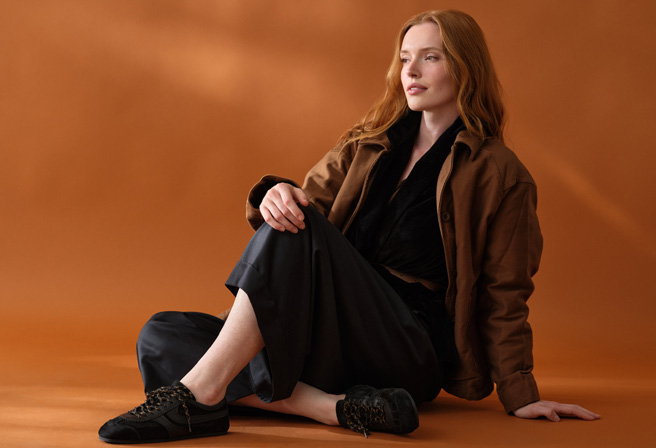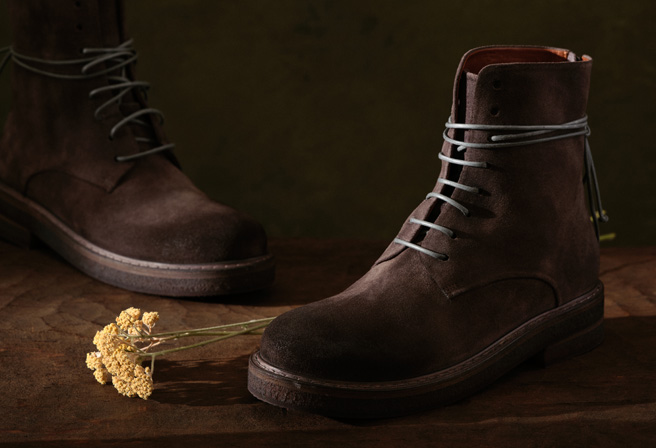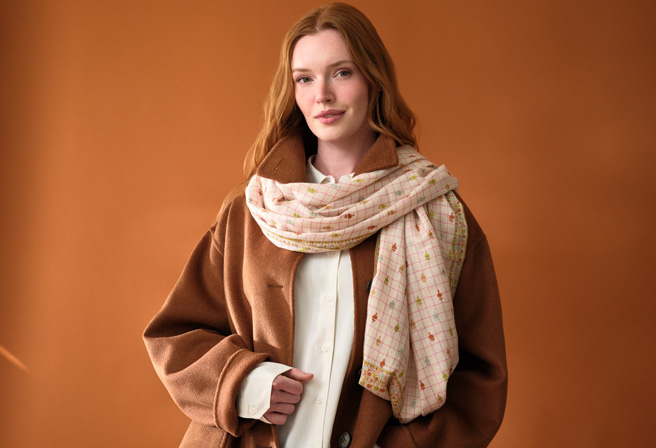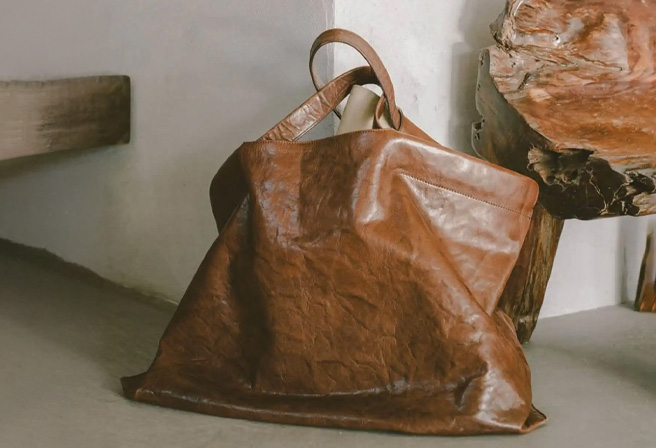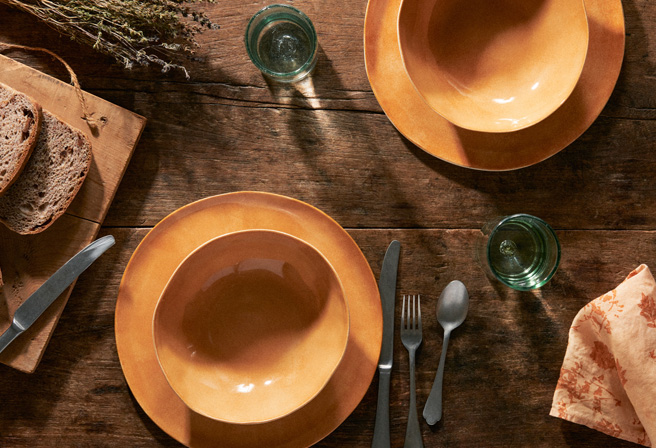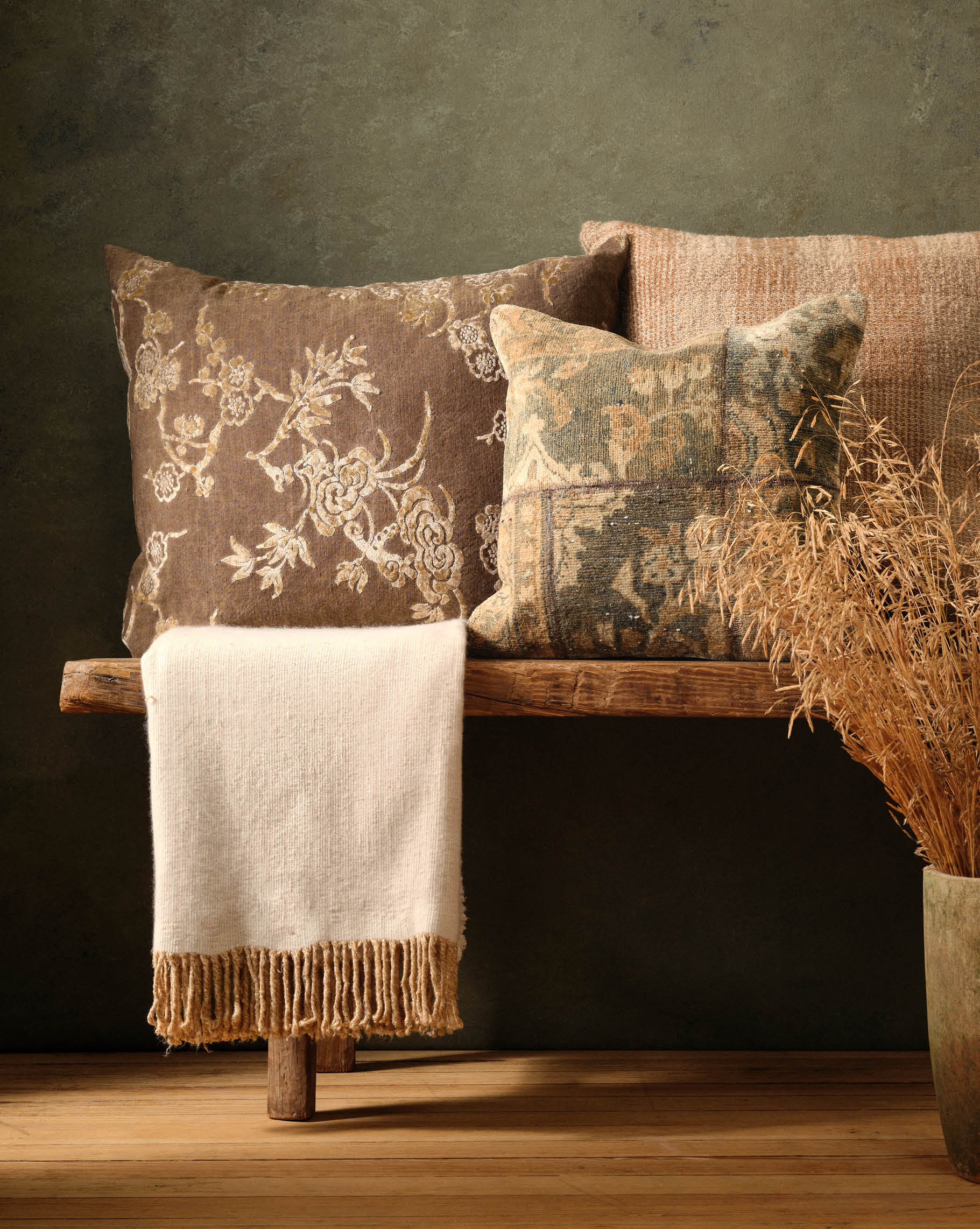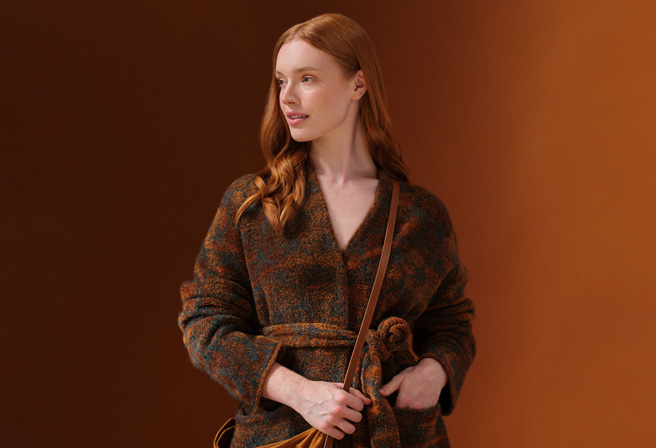Throughout the 20th and 21st century, cross-cultural and historical influences exerted a profound impact on fashion design. Paisley or geometric, stripes or flowers, patterns ebb and flow based on the influence of culture and the environment of the designer. Designs, styles and materials of other times and cultures became more accessible to designers through travel, cell phone photography, access to historical texts, access to auctions and global resellers and the availability of handcrafts and antiques online. And since fashion is intertwined with art, culture, social change and is in constant search of new. The result is that isolated aesthetic motifs and patterns are in a constant process of being uncovered and reinterpreted in fashion and for the home. These patterns and prints have a huge impact on product development, from elevating the everyday to the complex to making luxury simple.
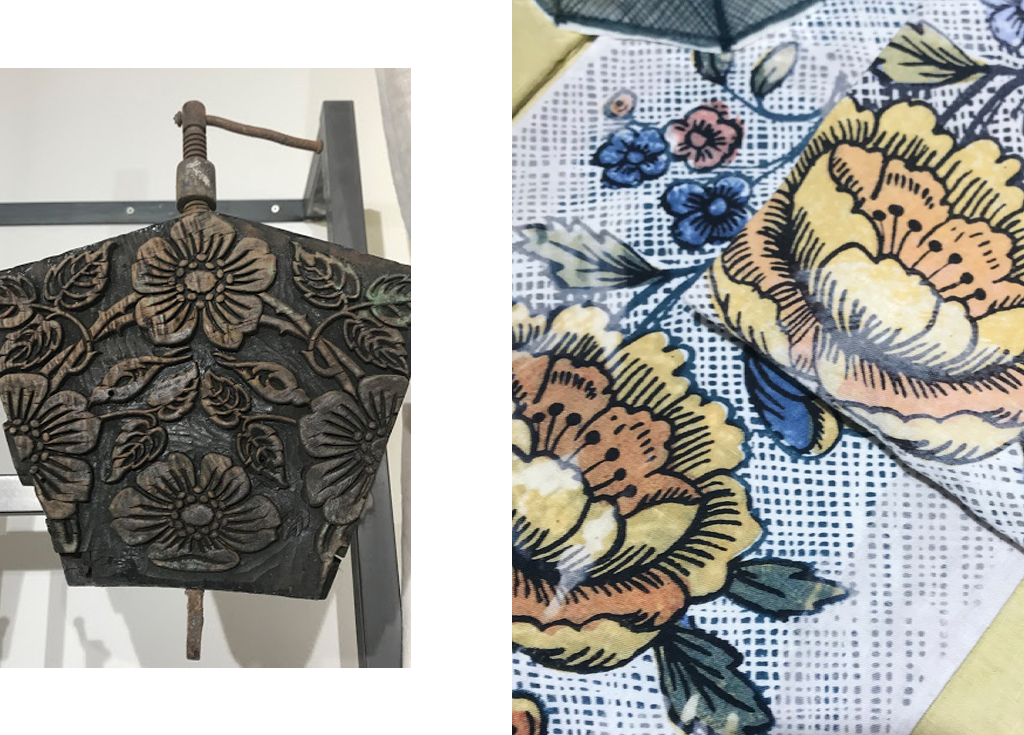
Stamperia Bertozzi and les Papiers Dominotés Français
Stamperia Bertozzi is a third-generation, family-run workshop of a small collective of artisans who engage in centuries-old traditional Italian block-print methods. Over the past hundred years, Bertozzi has curated a design archive of more than 1,000 motifs that can be used in endless combinations to suit any style. From traditional to classic to contemporary, each design is painstakingly hand-chiseled by the highly skilled craftsmen at the stamperia.
For the coming Spring collection, Gianluigi Bertozzi found inspiration in an out of print book, French Dominated Papers by Marc Kopylov, in which the author captures the book and brochure covers of France from 1750 to 1820. The book is comprised of a rich panorama of the motifs used by the artistic craftsmen specialized in engraving and printing. Since replicating the charm of these patterns is quite impossible, Bertozzi set out to develop their own pattern that would embody the charm and whimsy they saw in these historic patterns. This pattern was then printed onto napkins, dish towels, runners and tablecloths.

Etro’s Archival Print Library
Cultural exploration, world travel and family tradition define Etro. Founder Gimmo Etro’s travels to India led to his obsession with the tear-drop shaped motif, a passion shared by Mughal Empire courtiers and 18th-century Parisians before him. The paisley design originated in ancient Mesopotamia, where the pattern symbolized the seed of the date palm and ultimately the tree of life. Gimmo began collecting rare and antique scarves and shawls with this impeccably detailed pattern, which became the foundation for the family’s extensive textile library.
Etro’s archival textile library contains pieces dating back to the fifteenth century, a wealth of textile history informing a myriad of modern prints. The family has sourced their collection through travel and personal purchases, textile dealers and through specific auction houses specialized in antique fabrics. For over 50 years, the Etro family has collected colors, patterns and experiences from all over the world, elegantly translating them into a playful and modern interpretation for the independent woman.
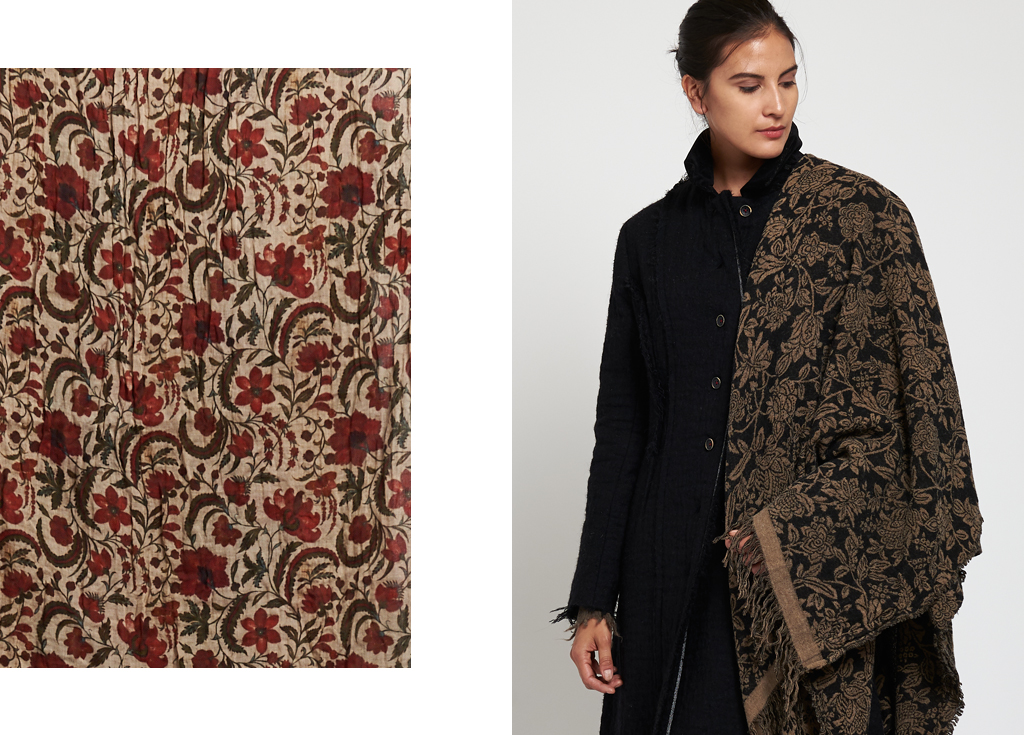
Uma Wang and Textile Innovation
Uma Wang is a continual force of textile innovation on the international scene. By intimately knowing her fabrics, Uma masterfully drapes silhouettes with a refined ease and simplicity, allowing the exquisite and unique textiles to shine as the focal point. Uma collaborated with a revered Italian fabric maker who assisted her in bridging the gap between fashion and art. This experimental and cerebral textile designer developed some of the most wild and complex fabrics for Uma’s designs. The patterns are often recreations of ancient Chinese motifs derived from old weavings, hand painted porcelain and art reproduced into both woven jacquards and printed fabrics. The fabrics are made in Italy, woven with traditional methods that infuse the materials with mystery and complexity. Only chemical-free dyes are used to create color variations that are truly one-of-a-kind and improve with age.

Dries Van Noten and the Soierie Lyonnaise
Dries Van Noten nimbly blends ancient and modern styles while mixing a sense of humility into his operatic designs. Because prints and pattern are central to his collections, Dries is personally involved in designing over 90% of the fabric, imbuing the collections with his signature lush complexity and setting the global standard for print design. For example, “some of the fabrics from the Women’s SS 20 collection are detailed reproductions of 19th century jacquards found in the archives of one of the last surviving textile makers of the famous ‘Soierie Lyonnaise’. The Soierie Lyonnaise is a group of specialized silk weaving mills, established in the region of Lyon, France since the 17th century to present day. Dries’ fabric design seems to embody perfection while simultaneously breaking all the rules. His voice is remarkably distinct and completely independent, creating glamour, contesting notions of masculinity and femininity and even guiding us to reconsider how we define beauty.

Brunello Cucinelli’s Medieval Village
Brunello Cucinelli runs his namesake humanist enterprise from a 14th century castle in the hamlet of Solomeo, Italy. For over 30 years, Brunello has acted as a steward for the medieval property as well as for the small 12th century village, converting the hamlet into a community of artisans and craftsmen. Instead of effacing the heritage of Solomeo with new developments, Brunello has worked tirelessly to restore and preserve the rich cultural legacy already existing.
The fragments of medieval frescoes, tilework and archways influence Brunello’s minimalist designs in palette/spirit if not in print. The luxurious garments reflect the colors of thousands of years of design/pattern and the rich depths of the Umbrian countryside.
